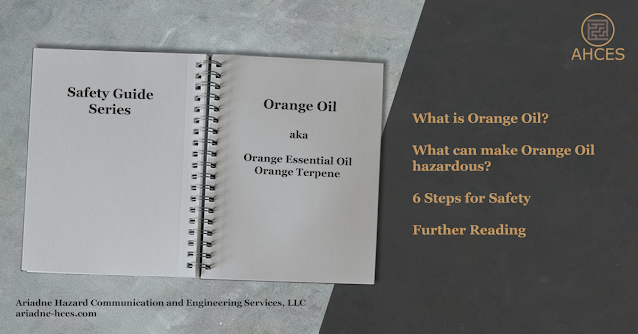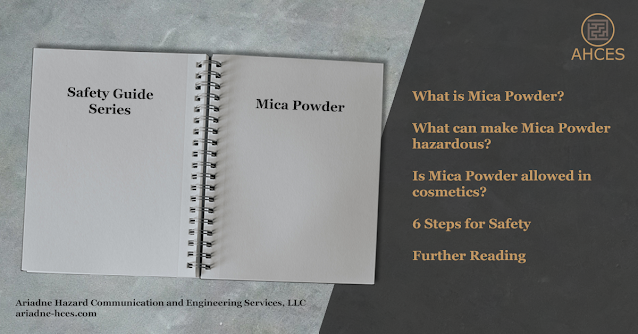The Five Elements of the Hazard Communication Standard
The Five Elements of the Hazard Communication Standard
There are five key sections to the Hazard Communication Standard (HCS).
- Hazard Classification
- Written Hazard Communication Programs
- Labels and Other Forms of Warning
- Safety Data Sheets
- Employee Information and Training
What is the OSHA Hazard Communication Standard?
The OSHA Hazard Communication Standard (HCS) is a part of the Occupational Safety and Health Standards covering Toxic and Hazardous Substances. The HCS is used as the standard for characterizing the hazards, if any, of chemicals and conveying that information in an easily understood manner.
Chemicals can be classified as health hazards, physical hazards, hazards otherwise classified, or a combination of all three depending on the individual properties.
Hazard Classification
Chemical manufacturers and importers are responsible for the classification of the chemicals they manufacture or import. Chemical distributors and end-users may choose to rely on the classification provided by their supplier or may perform the classification themselves.
When classifying chemicals, the full range of available scientific literature and other evidence concerning the potential hazards must be used. There is no requirement to test the chemical to determine how to classify its hazards, though testing may be undertaken to add to the body of evidence concerning the potential hazards.
When classifying mixtures, the information provided on the current safety data sheets of the individual ingredients may be used as a basis for classifications purposes. When using this method, corrections for any misstatements or omissions due to cumulative or additive properties must be made based on what is known or should be known with the exercise of reasonable diligence.
Appendix A to 29 CFR 1910.1200 covers the classification
of health hazards.
Appendix B to 29 CFR 1910.1200 covers the classification of physical hazards.
Written Hazard Communication Program
Chemical manufacturers, importers, distributors, and end-users all must develop and maintain a written hazard communication program. There is an exception to the requirement for laboratories who do not ship hazardous chemicals, though having a written program is still recommended.
The written hazard communication program must include the
following information.
- A description of how the labeling requirements will be met.
- A description of how the safety data sheet requirements will be met.
- A description of how the employee training requirements will be met.
- A list of all hazardous chemicals known to be in the workplace, using the product identifiers from the safety data sheets. This list may be done for the workplace as a whole or by individual work areas.
- The methods the employer will use to inform employees of any hazards associated with non-routine tasks.
In the event there is a multi-employers workplace where
employees of other employer(s) may be exposed to hazardous chemicals, the
written hazard communication program must also the following.
- Methods used to provide the other employer(s) on-site access to safety data sheets.
- Methods used to inform other employer(s) of any precautionary measures their employees need to take during normal operating conditions and in emergencies.
- Methods used to inform other employer(s) of the labeling system in use in the workplace.
Labels and Other Forms of Warning
Chemical manufacturers and importers are responsible for the creation of appropriate labels for any hazardous chemicals they manufacture or import. Chemical distributors and end-users are responsible to ensure that a proper label has been provided on containers they receive, though may also chose to create their own label.
A hazard communication standards label consists of the following elements.
- Product identifier or name
- Signal word
- Hazard statement(s)
- Pictogram(s)
- Precautionary statement(s)
- Name, address, and telephone number
The label, tag, or other marking must be legible, in English, and prominently displayed on the container. Alternate language versions of the label may be included in addition to the English language label.
If new, significant information the hazards of a chemical become known, there is a six month period to update any effected labels.
Labels for Transport
Each container of hazardous chemical leaving a workplace must have an appropriate label, tag, or other marking which includes all six (6) of the above elements. This label must not conflict with the separate Department of Transportation regulated placard and/or label for dangerous goods. Learn more about OSHA versus DOT Labels.
Labels for the Workplace
Workplace labels must only contain the first five (5) elements of the HCS label. Alternatively, they may be labeled with a combination of element 1, product identifier, and element 4, pictograms, provided that other information immediately available to employees in the workplace can provide the specific information regarding the physical and health hazards of the hazardous chemical.
Stationary containers, such as those in storage, may be marked utilizing the standard label, tag, or other marking. Alternatively, the same required information may be communicated utilizing signs, placards, process sheets, operating procedures, or similar written materials.
When a hazardous chemical is transferred out of the original container to a portable container, it does not require re-labeling if the transferred material is for use during the same work shift.
Label Exemptions
There are some materials that technically qualify as hazardous chemicals but have different labeling requirements than those described above. These include materials governed by other regulations, such as food additives and cosmetic ingredients covered by FDA labeling requirements and consumer goods labeled according to product safety standards.
The full list of exemptions to the labeling requirements can be found at 29 CFR 1910.1200(b)(5).
Please note that this exemption is only for labeling. Hazardous chemicals under the labeling exemptions still require the associated safety data sheet and listing in the written hazard communication program.
Safety Data Sheets
Chemical manufacturers and importers are responsible for the creation of appropriate safety data sheets for any hazardous chemicals they manufacture or import. Chemical distributors and end-users are responsible to ensure that a proper safety data sheet has been provided with chemicals they receive, though may also choose to create their own safety data sheet.
In the event there are multiple worksites, such as cleaning service or pest control service, the safety data sheets may be kept at the primary workplace facility. Necessary information must be available to remote employees in the event of an emergency. Alternatively, additional copies of the safety data sheets may be kept in a work vehicle or at satellite offices.
Content of a Safety Data Sheet
Safety data sheets are organized in sixteen sections.
- Section 1, Identification
- Section 2, Hazard(s) identification
- Section 3, Composition/information on ingredients
- Section 4, First-aid measures
- Section 5, Fire-fighting measures
- Section 6, Accidental release measures
- Section 7, Handling and storage
- Section 8, Exposure controls/personal protection
- Section 9, Physical and chemical properties
- Section 10, Stability and reactivity
- Section 11, Toxicological information
- Section 12, Ecological information
- Section 13, Disposal considerations
- Section 14, Transport information
- Section 15, Regulatory information
- Section 16, Other information, including date of preparation or last revision
If no relevant information is found for one of the sections or subsections, this must be indicated as the case rather than leaving a section blank.
The information contained within the sheet must accurately reflects the scientific evidence used in making the hazard classification.
Different complex mixtures which are similar in composition and have the same hazard classification may be included in the same safety data sheet document.
To be consistent with the GHS, which is an international guideline, the SDS must contain all section headings as written. OSHA does not have jurisdiction over the information within sections 12 though 15, therefore does not enforce the information within those specific sections. This information, however, can be enforced through the relevant departments.
Learn more about the details of Safety Data Sheet Requirements.
Employee Information and Training
Employers have a duty to their employees to ensure that they are provided the proper information and training to keep them safe in the workplace. Employees have the corresponding duty to follow the training and utilize safe work practices. Those who are self-employed have a duty to themselves to obtain the proper information and training to work safely.
Training should be provided at the time of initial assignment and whenever a new chemical hazard that an employee has not been trained on is introduced to the workplace. Training may be done for categories of hazards, such as a course on flammability, or cover specific chemicals.
Information for Employees
Employees must also be provided the following
information.
- The requirements of the hazard communication standard.
- Any operations in their work area where hazardous chemicals are present.
- The location and availability of the hazard communication program, including the required list(s) of hazardous chemical and safety data sheets.
Training Requirements
Employees must receive training that covers the
following.
- Explanation of labels.
- Explanation of safety data sheets.
- The physical, health, and other hazards of the chemicals present in the work area.
- Labeling system used in the workplace.
- Methods of detection for the presence or release of hazardous chemical in the work area.
- Measures they can take to protect themselves from the hazards.
- Appropriate work practices.
- Emergency procedures.
- Personal protective equipment.
Who is Responsible for Following the HCS?
Hazard communication is the responsibility of the employer. Employers are not, however, required to do all of the work by themselves. The work must simply be carried out by someone of reasonable competence following the hazard communication standard.
The work may be done by the employer, a competent employee as part of their job duties, or by a third-party consulting service.
Original Posting Date: Feb. 7, 2024
Last Updated: Jan. 27, 2025





Comments
Post a Comment